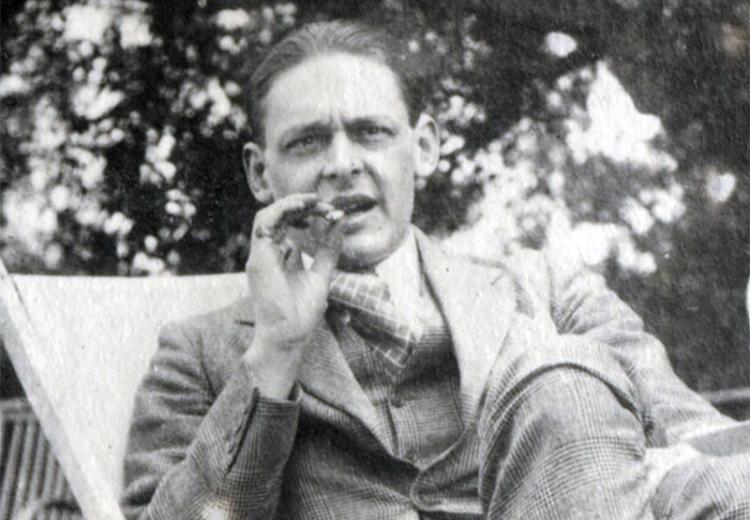Lesson 3: Navigating Modernism with J. Alfred Prufrock

T.S. Eliot, author of The Love Song of J. Alfred Prufrock.
"The English novelist Virginia Woolf declared that human nature underwent a fundamental change 'on or about December 1910.' The statement testifies to the modern writer's fervent desire to break with the past, rejecting literary traditions that seemed outmoded and diction that seemed too genteel to suit an era of technological breakthroughs and global violence."
—from the EDSITEment-reviewed Academy of American Poets “The Modernist Revolution: Make It New”
Modernist poetry often is difficult for students to analyze and understand. A primary reason students feel a bit disoriented when reading a modernist poem is that the speaker himself is uncertain about his or her own ontological bearings. Indeed, the speaker of modernist poems characteristically wrestles with the fundamental question of “self,” often feeling fragmented and alienated from the world around him. In other words, a coherent speaker with a clear sense of himself/herself is hard to find in modernist poetry, often leaving students confused and “lost.”
Such ontological feelings of fragmentation and alienation, which often led to a more pessimistic and bleak outlook on life as manifested in representative modernist poems such as T.S. Eliot’s “The Love Song of J. Alfred Prufrock” (1917), were prompted by fundamental and far-reaching historical, social, cultural, and economic changes in the early 1900s. These changes transformed the world from one that seemed ordered and stable to one that felt futile and chaotic.
In this lesson, students will explore the role of the individual in the modern world by closely reading and analyzing T.S. Eliot’s “The Love Song of J. Alfred Prufrock.”
Guiding Questions
What are several key characteristics of literary modernism?
What were the effects of these influential factors?
What are several historical, social, and cultural forces that prompted the modernist movement?
Learning Objectives
Understand the literary context of modernism.
Define and understand in context common poetic devices.
Analyze several modernist poems, including T.S. Eliot’s “The Love Song of J. Alfred Prufrock."
Evaluate the historical, social, and cultural context of modernism at large.
